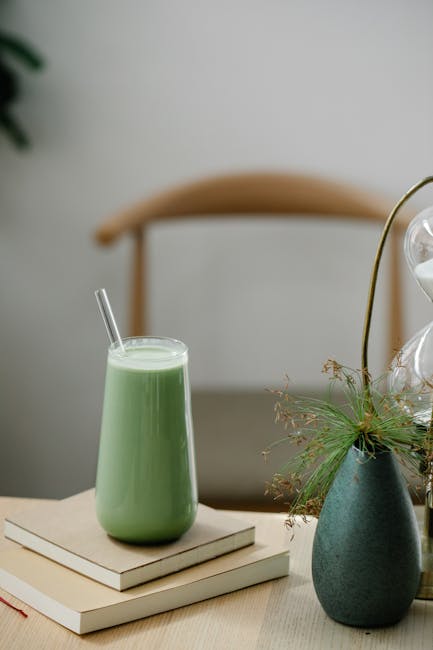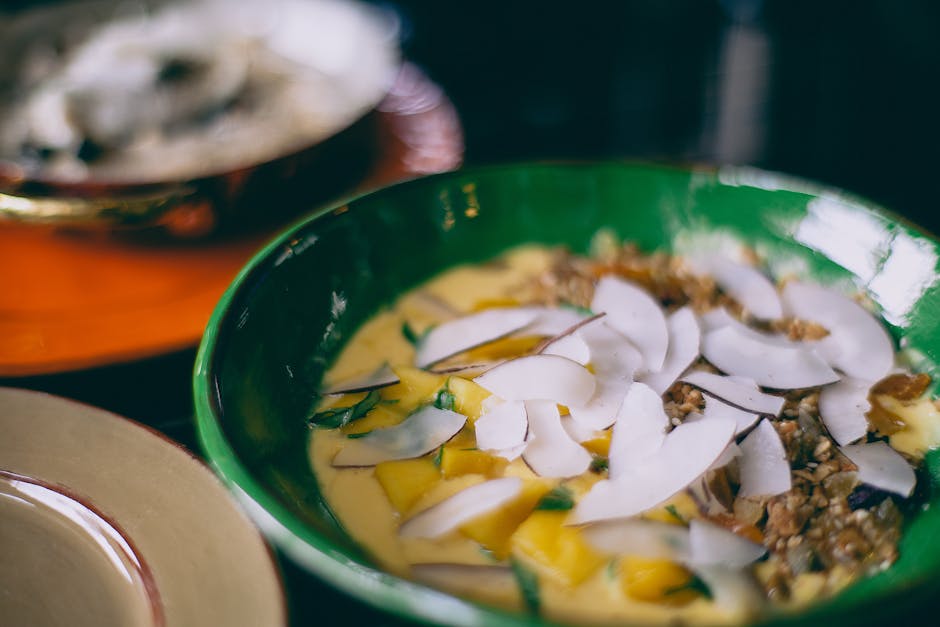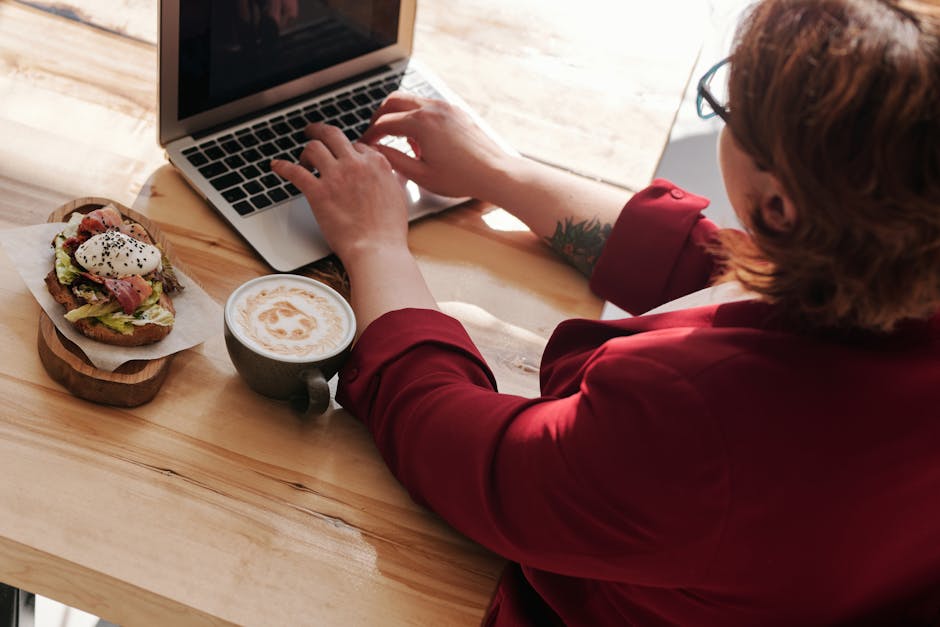The Simple Green Tea Latte, a seemingly ubiquitous beverage in modern cafes across the globe, boasts a history far richer and more nuanced than its simple name suggests. While the precise origins of the modern green tea latte are difficult to pinpoint, its roots lie firmly in the ancient traditions of tea cultivation and consumption, primarily in East Asia. For centuries, green tea, Camellia sinensis, has been a cornerstone of Chinese, Japanese, and Korean cultures, holding significant social, religious, and medicinal importance. Its preparation and consumption were often elaborate rituals, far removed from the quick convenience of today’s latte. Estimates suggest that over two billion cups of tea are consumed daily worldwide, highlighting the enduring appeal of this versatile beverage.
The evolution of the green tea latte into the drink we know today is a testament to the global exchange of culinary ideas and practices. While steeped green tea has been a mainstay for millennia, the addition of milk—a common practice in Western cultures—is a relatively recent development. The precise moment when the combination of hot green tea and milk became a distinct beverage remains unclear, but its rise in popularity coincides with the increasing globalisation of coffee culture and the subsequent adaptation of similar beverage formats. The latte itself, derived from Italian latte meaning milk, further underscores this influence, showcasing how a centuries-old Eastern tradition has been reimagined through a Western lens. The popularity of milk-based tea drinks has seen a significant surge in recent years, driven by consumer demand for healthier, more flavorful alternatives to traditional coffee.
Beyond its simple ingredients, the green tea latte carries significant cultural weight. In many East Asian countries, the act of drinking tea remains a deeply ingrained social custom, often associated with rituals of hospitality, respect, and mindfulness. Green tea, in particular, is revered for its purported health benefits, including its antioxidant properties. Studies have shown that green tea consumption is linked to a lower risk of several chronic diseases, contributing to its enduring appeal as both a beverage and a health supplement. The green tea latte, therefore, not only represents a fusion of culinary traditions but also a confluence of diverse cultural values, seamlessly blending the ancient rituals of tea ceremonies with the modern convenience of a quick and refreshing drink. Its simplicity belies a rich history, embodying both cultural heritage and contemporary trends.
Ingredients and Measurements
Creating the perfect Simple Green Tea Latte hinges on using high-quality ingredients and precise measurements. While seemingly simple, the balance of flavors is delicate, and getting the ratios right is crucial for a truly delightful beverage. Below, we outline the ingredients and their quantities, along with some professional recommendations to elevate your latte experience.
Green Tea: We recommend using 2-3 grams of loose leaf green tea, or approximately 1-1.5 teaspoons if using tea bags. The type of green tea significantly impacts the final flavor profile. Sencha offers a bright, vegetal note, while Gyokuro provides a richer, umami taste. Consider experimenting with different varieties to find your personal preference. For consistent results, use a kitchen scale to measure the tea leaves, ensuring accuracy and preventing over- or under-brewing.
Water: The quality of your water is surprisingly important. Use filtered or spring water to avoid any off-flavors that might compromise the delicate taste of the green tea. For this recipe, you’ll need approximately 6 ounces (177 ml) of freshly boiled water. Avoid using microwaved water, as it can sometimes impart a slightly metallic taste.
Milk: The choice of milk significantly impacts the texture and richness of your latte. Whole milk provides the creamiest texture and a naturally sweeter flavor, while skim milk offers a lighter option. Alternatives like almond milk, soy milk, or oat milk are also excellent choices, each lending its unique character to the drink. For this recipe, you’ll need approximately 6 ounces (177 ml) of your chosen milk. Heat the milk gently, either on the stovetop or in a microwave, until it’s steaming but not boiling. Avoid scorching the milk, as this can create an unpleasant burnt taste.
Sweetener (Optional): While many appreciate the naturally subtle sweetness of green tea, you might prefer to add a touch of sweetener to enhance the flavor. Honey, maple syrup, or agave nectar are all excellent choices, offering different flavor profiles. Start with a small amount (1-2 teaspoons) and adjust to your preference. Remember that the sweetness of the milk and the inherent sweetness of the green tea will also contribute to the overall sweetness of the drink. Artificial sweeteners can be used, but their aftertaste might clash with the delicate flavors of the tea.
Spices (Optional): A pinch of cinnamon, cardamom, or ginger can add a delightful warmth and complexity to your green tea latte. Experiment with these spices to discover your preferred flavor combinations. Adding spices after brewing the tea allows for a more nuanced flavor infusion. A simple sprinkle on top before serving can also be visually appealing.
In summary: The key to a perfect Simple Green Tea Latte lies in careful attention to detail. Use high-quality ingredients, measure accurately, and don’t be afraid to experiment with different types of tea, milk, and sweeteners to find your own signature recipe. Enjoy!
Equipment List: Simple Green Tea Latte
Making a perfect green tea latte requires the right tools to ensure consistent results and a pleasant brewing experience. While you can adapt with substitutes, having the proper equipment enhances both the quality and efficiency of the process. This list details the essential and recommended equipment, along with explanations to guide your choices.
Kettle: A gooseneck kettle is highly recommended. Its narrow spout allows for precise pouring, crucial for controlling the water flow over the tea leaves during steeping. This prevents over-extraction and bitterness. A 1.5-liter capacity is generally sufficient for multiple servings. If you don’t have a gooseneck kettle, a regular kettle will work, but you’ll need to be more careful with your pouring technique. Avoid using a microwave to heat water for tea; it can lead to uneven heating and potentially scorch the leaves.
Teapot or Infuser: For optimal brewing, a teapot with an integrated infuser or a separate infuser is essential. This allows for easy separation of the tea leaves from the brewed liquid, resulting in a cleaner, less-sedimented latte. A 400-500ml capacity teapot is ideal for preparing enough tea for a couple of lattes. If using a separate infuser, ensure it’s made of fine-mesh stainless steel or a similar material that allows for thorough infusion without allowing the leaves to escape.
Scale: A digital kitchen scale is a game-changer for consistent tea brewing. Precise measurement of both tea leaves and milk is critical for achieving the desired strength and flavor profile. A scale with a capacity of at least 1kg and a precision of 0.1g is recommended. Using a scale eliminates the guesswork and ensures consistent results every time you make a green tea latte. Measuring by volume can be inaccurate, leading to inconsistent flavor.
Milk Frother: While not strictly necessary, a milk frother significantly enhances the latte experience. An electric frother, either handheld or automatic, produces a smooth, creamy texture that elevates the drink. If you don’t have a frother, you can try using a whisk vigorously to create some foam, though the texture will be less refined. Consider the volume of milk you typically use when selecting a frother; some models are better suited for smaller quantities than others.
Measuring Spoons and Cups: Even with a scale, having a set of measuring spoons and cups is helpful for measuring ingredients like sugar or other flavorings if you choose to add them. Accurate measurement ensures consistency in taste and sweetness.
Mug or Glass: Finally, you’ll need a mug or glass to serve your delicious green tea latte. Choose a vessel that’s comfortable to hold and aesthetically pleasing. The size should be appropriate for the amount of latte you’re preparing. Consider using a pre-heated mug to maintain the latte’s temperature for a longer period.
Optional Equipment: A timer can be beneficial for precise steeping times, and a thermometer can help ensure the water reaches the optimal temperature for brewing (around 170-180°F or 77-82°C for green tea).
Instructions
Crafting the perfect Simple Green Tea Latte is easier than you think! Follow these detailed instructions for a consistently delicious and refreshing beverage. We’ll guide you through each step, ensuring a smooth and enjoyable brewing process.
Step 1: Prepare the Green Tea. Begin by heating 1 cup (240ml) of filtered water. Avoid using tap water as it can impart off-flavors to your delicate tea. The ideal water temperature for green tea is between 160-180°F (71-82°C). Using a thermometer is highly recommended to achieve the perfect temperature. If you don’t have a thermometer, bring the water to a rolling boil and then let it sit for 1-2 minutes to cool slightly before pouring over the tea leaves.
Step 2: Steep the Tea. Place 1-2 teaspoons of loose leaf green tea (or 1-2 green tea bags) in a heat-resistant mug or teapot. The amount of tea you use will depend on your personal preference for strength. More tea will result in a stronger, more bitter brew, while less will create a milder flavor. Pour the heated water over the tea leaves, ensuring all the leaves are fully submerged. Cover the mug or teapot to trap the heat and allow the tea to steep for 3-5 minutes. Steeping for longer will result in a more intense flavor, but you risk bitterness. Experiment to find your perfect steeping time.
Step 3: Sweeten (Optional). Once the tea has steeped, remove the tea leaves or tea bags. You can do this by pouring the tea through a fine-mesh strainer into a separate cup or by simply removing the tea bags. At this stage, you can add your preferred sweetener. Honey, maple syrup, or agave nectar are excellent choices, as they complement the subtle flavors of green tea. Start with 1-2 teaspoons and adjust to your taste. Remember that the sweetness will be slightly diluted when you add the milk.
Step 4: Froth the Milk (Optional). For a truly luxurious latte experience, froth your milk. You can achieve this using a milk frother, a handheld whisk, or even by shaking the milk vigorously in a sealed jar. Use whole milk, 2% milk, or oat milk for the best frothing results. Almond milk and soy milk can also be used, but they may not froth as well. Froth approximately ½ cup (120ml) of milk until it’s light and airy.
Step 5: Combine and Serve. Gently pour the frothed milk into your tea. Avoid stirring vigorously to maintain the lovely texture of the frothed milk. If you prefer a sweeter latte, you can add more sweetener at this point. Garnish with a sprinkle of cinnamon or a sprig of fresh mint for an elegant touch. Serve immediately and enjoy your homemade Simple Green Tea Latte!
Professional Recommendation: Experiment with different types of green tea to discover your favorite flavor profile. Sencha, Gyokuro, and Matcha are all excellent choices for a latte. Remember that the quality of your ingredients directly impacts the final taste of your drink. Using high-quality tea and fresh milk will significantly enhance the overall experience.
Brewing the Green Tea
Brewing the perfect cup of green tea is crucial for a delicious green tea latte. The quality of your tea directly impacts the final flavor profile, so choose high-quality loose leaf green tea whenever possible. Tea bags can work in a pinch, but loose leaf generally provides a more nuanced and flavorful brew. For this recipe, we recommend using about 2 grams of loose leaf green tea, or one standard tea bag, per 6 ounces of water.
The water temperature is paramount. Unlike black tea, which can tolerate boiling water, green tea is delicate. Boiling water can scorch the leaves, resulting in a bitter and astringent taste. Ideally, use water heated to between 160-180°F (71-82°C). A good way to achieve this is to bring water to a boil, then let it sit for 1-2 minutes before using it. You can also use a variable temperature kettle for precise control.
Once your water is at the correct temperature, gently place the loose leaf tea (or tea bag) into your brewing vessel. A small teapot, infuser, or even a heat-resistant mug with a fine mesh strainer will work perfectly. Avoid overcrowding the leaves; give them ample room to unfurl and release their flavor. Pour the heated water over the tea leaves, ensuring all leaves are fully submerged. If using a teapot, pour the water slowly and evenly to ensure consistent extraction.
Steep the tea for the recommended time. Steeping time varies depending on the type of green tea and your personal preference. Generally, 2-3 minutes is a good starting point for most green teas. Over-steeping will result in a bitter and harsh taste, while under-steeping will yield a weak and flavorless brew. Keep in mind that some delicate green teas may require shorter steeping times (1-2 minutes), while others might benefit from slightly longer steeping (3-4 minutes). Experiment to find the perfect balance for your chosen tea.
After the steeping time is complete, immediately remove the tea leaves or tea bag from the water. This prevents over-extraction and bitterness. If using loose leaf tea, a fine-mesh strainer is essential to remove all the leaves before proceeding to the next step. Allow the brewed tea to cool slightly before using it in your latte. If the tea is too hot, it will scald the milk and potentially cause scorching.
Professional Tip: For an even more flavorful brew, consider pre-warming your teapot or mug with hot water before adding the tea leaves. This helps maintain the water temperature throughout the steeping process and contributes to a more consistent and flavorful extraction. Remember to discard the pre-warming water before adding the tea leaves and hot water.
Following these steps will ensure you have a perfectly brewed cup of green tea, forming the delicious base for your delightful green tea latte. Remember to always taste your tea as you brew to find your preferred steeping time and strength.
Frothing the Milk (optional)
While a simple green tea latte can be enjoyed without frothed milk, adding a layer of creamy, textured milk significantly enhances the experience. Frothed milk adds a delightful richness and complements the subtle bitterness of the green tea, creating a more luxurious and satisfying beverage. This section details how to achieve perfectly frothed milk for your green tea latte, whether you prefer a light, airy foam or a denser, creamier texture.
Choosing Your Milk: The type of milk you choose greatly impacts the frothing process. Whole milk, with its higher fat content, produces the richest and most stable foam. Oat milk and soy milk also froth well, though the texture might differ slightly. Skim milk or almond milk, due to their lower fat content, tend to produce less voluminous foam that may collapse more quickly. Experiment to find your preferred milk type.
Method 1: Using a Milk Frother (Recommended): A handheld milk frother is the easiest and most efficient way to froth milk for your latte. Pour 1/2 cup (120ml) of your chosen milk into a sturdy glass or stainless steel container. Ensure the milk is cold; cold milk froths better and produces a more stable foam. Submerge the frother completely and whisk vigorously for 15-20 seconds, or until the milk is light and fluffy and has doubled in volume. Avoid over-frothing, as this can lead to a grainy or overly dense texture.
Method 2: Using a French Press: If you don’t have a milk frother, a French press can be surprisingly effective. Heat your milk gently on the stovetop or in the microwave until it’s warm but not boiling (approximately 120-140°F or 49-60°C). Pour the warm milk (1/2 cup or 120ml) into the French press. Close the lid and vigorously pump the plunger up and down for about 20 seconds. Be careful not to pump too hard, as this can cause the milk to splatter. The resulting foam will be slightly less airy than that produced by a milk frother.
Method 3: Using a Whisk (Manual Method): For a truly manual approach, you can use a whisk. This method requires more effort and time but can still yield satisfactory results. Warm the milk as in Method 2. Vigorously whisk the milk in a bowl for at least 1 minute, incorporating air into the milk until it becomes frothy. Patience is key with this method; the longer you whisk, the more voluminous the foam will be. This method will produce a lighter foam than the other methods.
Incorporating the Frothed Milk: Once your milk is frothed to your desired consistency, gently pour it over your brewed green tea. Avoid stirring vigorously, as this will deflate the foam. You can create a beautiful layered effect by slowly pouring the frothed milk over the back of a spoon. Enjoy your creamy, frothy green tea latte!
Troubleshooting: If your milk doesn’t froth well, it might be too hot or too cold. Cold milk froths better, but excessively cold milk may also impede the process. Experiment with different milk temperatures to find the optimal range. If using a milk frother, ensure it’s clean and functioning correctly. A clogged frother will not produce a good foam.
Sweetening (Optional)
While many appreciate the naturally subtle sweetness of a good green tea, adding a touch of sweetener can enhance the experience for those with a preference for sweeter beverages. This section explores various options and provides guidance on achieving the perfect balance of sweetness without overpowering the delicate flavor profile of the green tea.
Choosing Your Sweetener: The type of sweetener you select significantly impacts the overall taste of your green tea latte. Avoid overly processed sweeteners like high-fructose corn syrup, as they can clash with the nuanced flavors of the tea. Instead, consider these options:
1. Honey: A natural and versatile sweetener, honey offers a unique floral and subtly complex sweetness that complements green tea beautifully. Start with 1-2 teaspoons (5-10ml) per serving and adjust to your taste. Note: The flavor of honey varies depending on its source; experiment to find your favorite variety. Raw honey may add a slightly thicker texture to your latte.
2. Maple Syrup: Another natural option, maple syrup brings a rich, slightly caramel-like sweetness and a touch of warmth. Similar to honey, start with 1-2 teaspoons (5-10ml) per serving and adjust as needed. Consider the grade of maple syrup as the flavor intensity varies. Grade A amber or dark amber maple syrups generally offer a more robust flavor that pairs well with green tea.
3. Agave Nectar: This liquid sweetener boasts a mild, slightly fruity sweetness. It’s a good choice for those sensitive to strong flavors. Begin with ½ – 1 teaspoon (2.5-5ml) per serving, as agave nectar is significantly sweeter than honey or maple syrup. Use sparingly to prevent the latte from becoming overly sweet.
4. Coconut Sugar: A minimally processed sweetener derived from coconut palm sap, coconut sugar offers a slightly caramel-like flavor with a hint of molasses. It provides a unique twist to your green tea latte. Use a similar quantity to honey or maple syrup (1-2 teaspoons or 5-10ml), adjusting according to your preference. Be mindful of its potential to slightly thicken the latte.
5. Stevia/Monk Fruit Sweeteners: For those seeking a low-calorie option, stevia or monk fruit-based sweeteners are excellent choices. They are intensely sweet, so use them very sparingly, starting with just a few drops and adding more gradually until you reach your desired sweetness. These sweeteners can have a slightly aftertaste, so be sure to experiment to see if the aftertaste is acceptable to you.
Important Considerations:
• Add sweetener after brewing the tea: This ensures that the delicate flavors of the tea aren’t compromised by excessive heat. Adding it to the warm milk before combining is also a good option.
• Start small and adjust: It’s always better to start with a small amount of sweetener and gradually add more until you achieve your preferred level of sweetness. This prevents you from over-sweetening the drink.
• Consider the strength of your tea: A stronger brew of green tea may require slightly more sweetener than a weaker brew.
• Experiment and find your perfect blend: The best sweetener for your green tea latte is ultimately a matter of personal preference. Don’t hesitate to experiment with different types and quantities until you find your ideal combination.
Simple Green Tea Latte: Recommendations
Our Simple Green Tea Latte offers a refreshing and subtly sweet experience, perfect for any time of day. To fully enjoy its delicate flavors, we recommend the following:
Serving Suggestions: For the optimal tasting experience, we suggest enjoying your Simple Green Tea Latte warm, but it is equally delicious served iced. If served warm, avoid overheating, as this can diminish the subtle nuances of the green tea. For an iced version, brew the latte stronger and chill thoroughly before serving. Consider adding a splash of milk or a touch of honey or maple syrup to customize the sweetness to your liking. A sprinkle of cinnamon or a few drops of vanilla extract can add delightful layers of flavor. Experiment with different types of milk – almond, soy, or oat milk all complement the tea beautifully.
Storage Conditions: For the best quality and flavor, store your Simple Green Tea Latte concentrate (if applicable) in an airtight container in the refrigerator. Consume within 5 days of preparation for optimal freshness. If you are using pre-made latte mix, follow the storage instructions on the packaging. Avoid prolonged exposure to heat or direct sunlight, as this can affect the taste and aroma of the tea.
Complementary Dishes: The subtle earthiness of our Simple Green Tea Latte pairs remarkably well with a variety of foods. It complements light breakfast pastries such as scones or muffins perfectly. The gentle sweetness also makes it an ideal accompaniment to delicate desserts like fruit tarts or sponge cakes. For a more savory pairing, consider enjoying it alongside a light lunch of a quinoa salad or a vegetable wrap. Its refreshing nature also makes it a great palate cleanser between courses of a multi-course meal.
Nutritional Information (per serving, approximate values may vary slightly depending on preparation):
- Calories: Approximately 100-150 calories (depending on milk and sweetener additions)
- Fat: Low to moderate, depending on the type of milk used.
- Carbohydrates: Moderate, primarily from the milk and any added sweeteners.
- Protein: Low to moderate, depending on the type of milk used.
- Sugar: Naturally occurring sugars from the tea and any added sweeteners.
- Caffeine: Moderate; please note that caffeine content can vary depending on the type of green tea used.
Important Note: Nutritional information provided is an estimate and may vary based on specific ingredients and preparation methods. Always check the nutritional information on the specific ingredients you are using. If you have any dietary restrictions or concerns, please consult with a healthcare professional before consuming this beverage.





